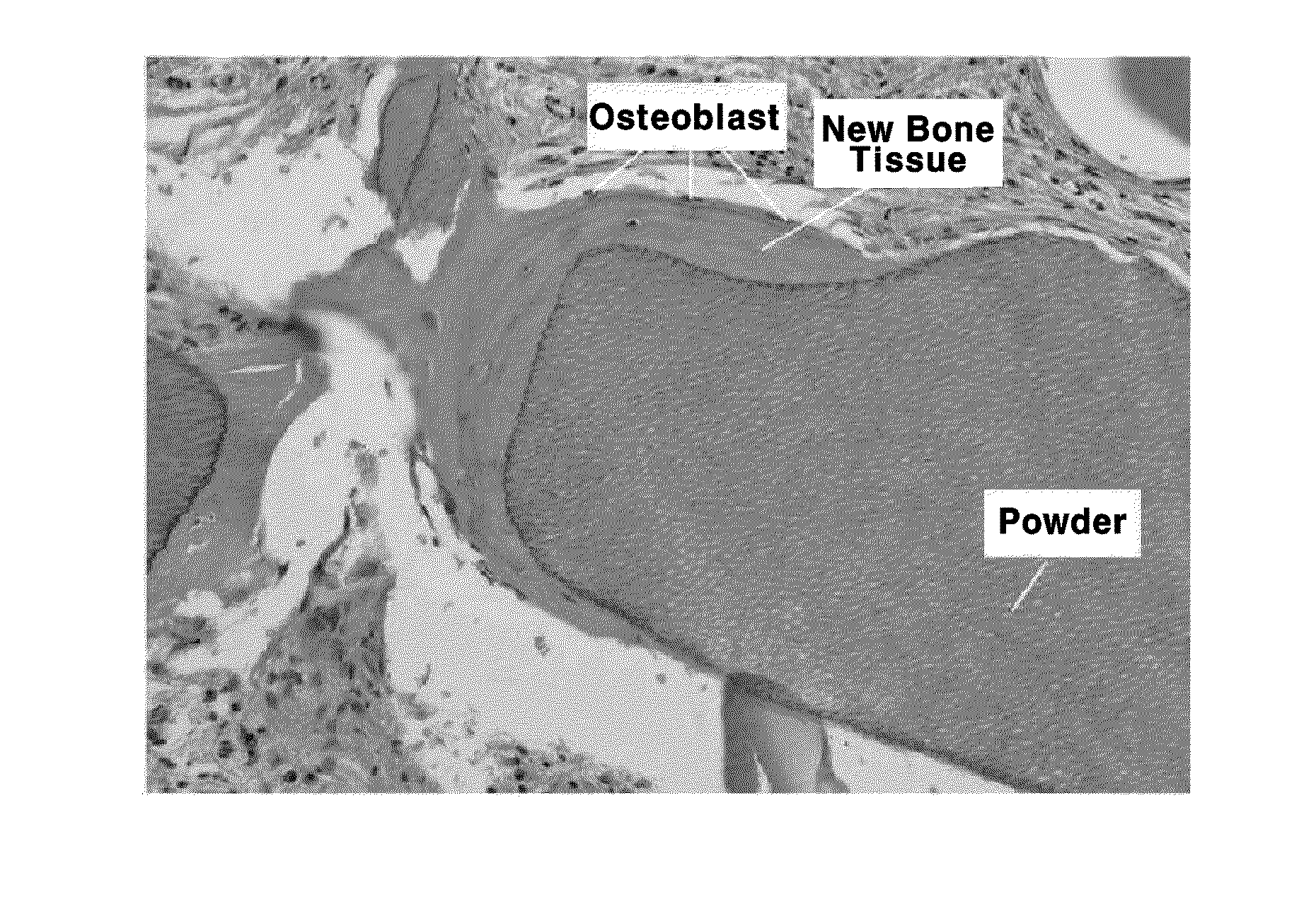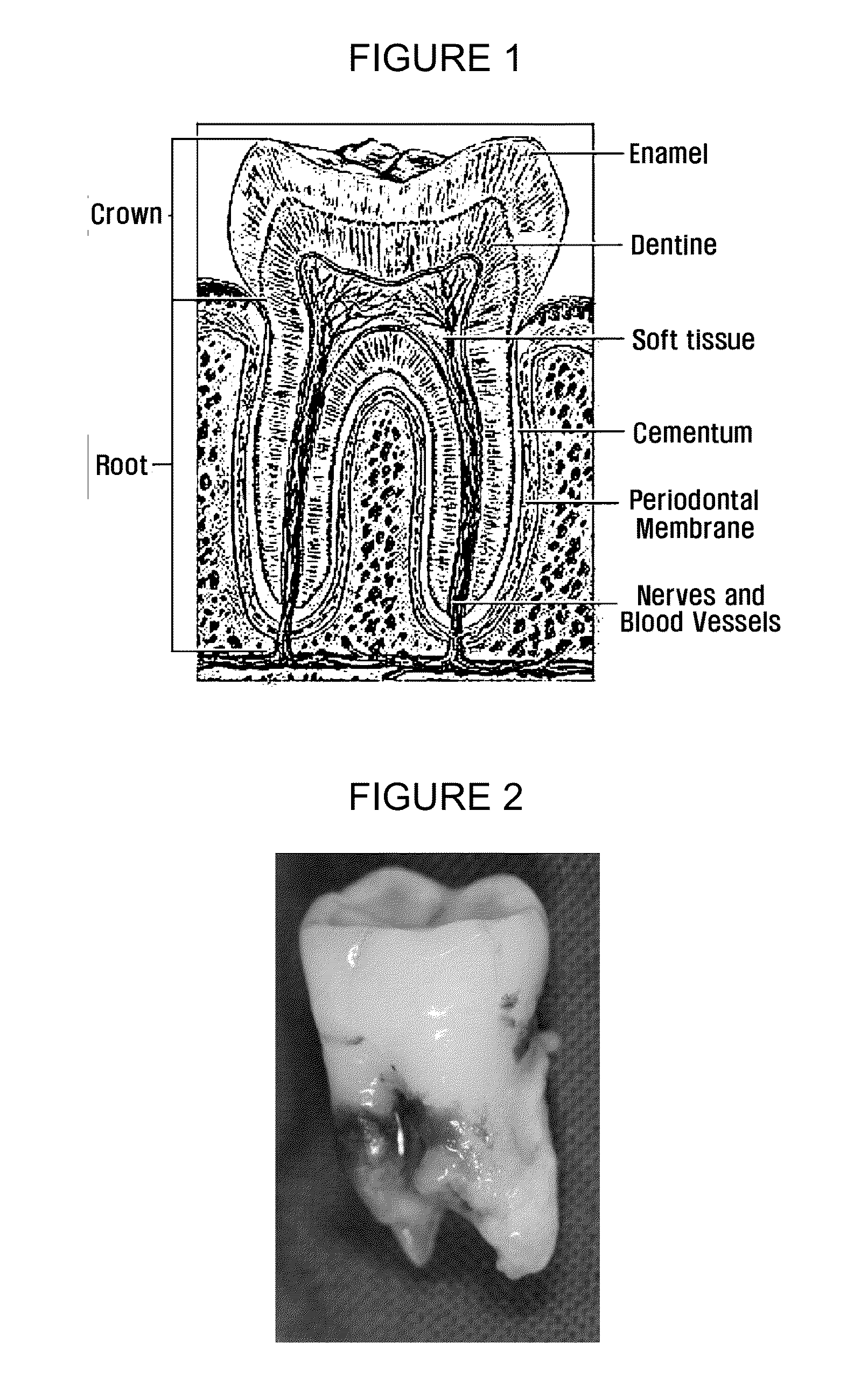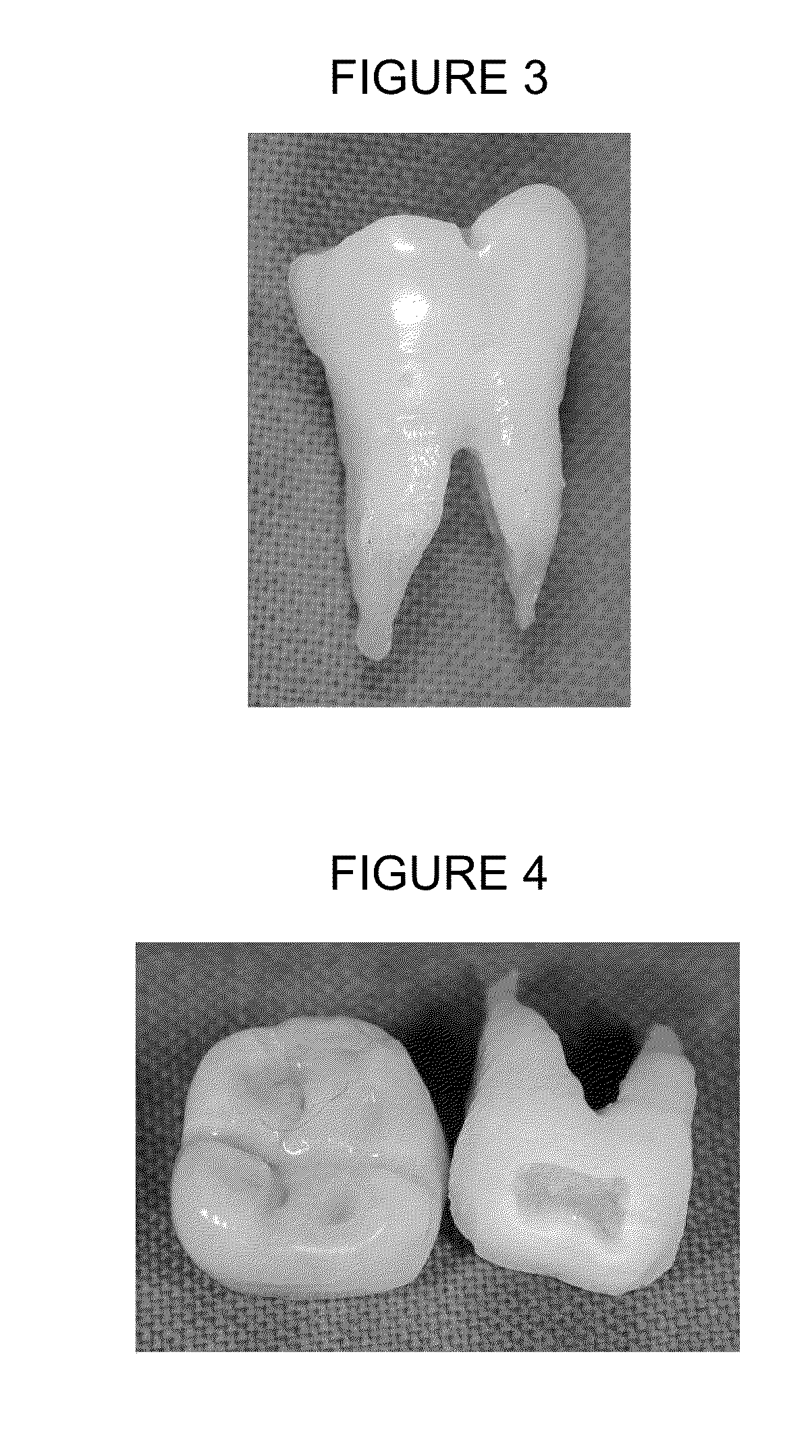Method for processing bone graft material using teeth, and bone graft material processed thereby
a bone graft and processing method technology, applied in the field of bone graft material, can solve the problems of difficult for native patients, difficult for alveolars to fix the fixture rigidly, and difficult for graft materials from another person to have immunity rejection response, etc., and achieve the effect of high alveolar regeneration ra
- Summary
- Abstract
- Description
- Claims
- Application Information
AI Technical Summary
Benefits of technology
Problems solved by technology
Method used
Image
Examples
example
Example 1
Enamel Powder
[0051]An Example wherein the dental crown of an extracted tooth is processed into powder will be described below.
[0052]To begin with, the extracted tooth whose defective parts such as dental caries and inflammation are removed as shown on FIG. 3 is cut at the boundary between the dental crown and dental root, as shown on FIG. 4 and FIG. 5.
[0053]The dental crown whose soft and pulp tissues are removed, as shown in FIG. 6, is washed with distilled water for about 30 minutes to about two hours. The dental crown whose soft and pulp tissues are removed as shown in FIG. 6, may have both enamel and dentin.
[0054]After the process, the treated dental crown as shown in FIG. 6 is quick-frozen in liquefied nitrogen at about −160° C. to about −210° C. for about 30 minutes to 2 hours, and crushed with a pulverizer into power whose average particle diameter ranges between from about 200 μm to about 1,500 μm, as shown in FIG. 7.
[0055]The powder may be washed with distilled wa...
example 2
[0063]An Example wherein the dental root of an extracted tooth is processed into powder will be described below.
[0064]To begin with, the extracted tooth whose defective parts such as dental caries and inflammation are removed as shown on FIG. 3 is cut at the boundary between the dental crown and dental root, as shown on FIG. 4 and FIG. 5.
[0065]The dental root whose soft and pulp tissues are removed, as shown in FIG. 6, is washed with distilled water for about 30 minutes to about 2 hours. As shown in FIG. 6, the dental root without soft and pulp tissues has residual dentin and cementum.
[0066]The dental root treated as shown in FIG. 6 is processed by quick-freezing and crushing, the same method applied to the dental crown as described in Example 1, into powder whose average particle diameter is about 200 μm to about 1,500 μm.
[0067]The powder may be washed with distilled water for about 30 minutes to about 2 hours to remove contaminants and residual soft tissue, same as Ex...
PUM
 Login to View More
Login to View More Abstract
Description
Claims
Application Information
 Login to View More
Login to View More - R&D
- Intellectual Property
- Life Sciences
- Materials
- Tech Scout
- Unparalleled Data Quality
- Higher Quality Content
- 60% Fewer Hallucinations
Browse by: Latest US Patents, China's latest patents, Technical Efficacy Thesaurus, Application Domain, Technology Topic, Popular Technical Reports.
© 2025 PatSnap. All rights reserved.Legal|Privacy policy|Modern Slavery Act Transparency Statement|Sitemap|About US| Contact US: help@patsnap.com



